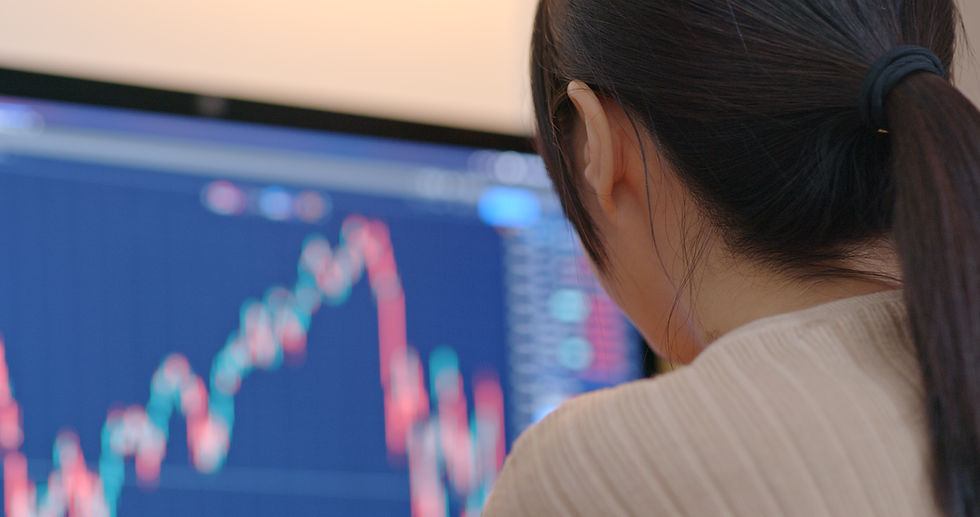Who's Afraid Of The Big Bad DAF?
- Ken Wells

- Jan 16, 2022
- 4 min read

Donor Advised Funds (DAFs) are one of the most controversial, polarizing issues in the nonprofit world. The first time they popped up on my radar was when a donor I didn't know well gave my nonprofit a fairly substantial gift his DAF. The check came from a financial institution that didn't provide any of the donor's contact information, so I had no idea how to contact him directly. How do you say thank you, much less engage a donor in your mission?
Since then a huge debate has erupted over the impact of these funds on philanthropy.
What's a DAF? A donor advised fund, or DAF, is a financial account that makes charitable contributions on a client's behalf. You place stocks, bonds or other assets into the DAF and, when you are ready to make a donation, you tell your financial institution to give X dollars to YZ charity and it sends that organization the funds.
DAFS are big and getting bigger. In 2020, DAFs accounted gave around $35 billion to charities, representing a 27-percent increase over2019, according to the National Philanthropic Trust. Contributions also jumped by nearly $50 billion, an increase of 10%. At the same time, the assets sitting in DAFS continued to increased, reaching nearly $160 billion, money meant for charity that is sitting in accounts unused.
The Critics - Critics say that mountain of cash proves that DAFs encourage investors to stockpile wealth while nonprofits struggle. One of the chief critics of DAF's is Houston's own John Arnold, who calls them "wealth-warehousing vehicles" that underfund charities. He also points out that the big financial institutions have no reason to encourage contributions because they earn fees or interest on all of that unspent money. The critics are pushing Congress to change the law in order to get donors to distribute funds more quickly.
The Supporters - On the other side of the argument, the financial institutions say nearly 25% of the funds in DAFs are paid out to charities every year. They compare that to foundations which are only required to pay 5% of their assets a year. Fidelity Investments, the largest DAF manager, says its clients distributed a record 2 million grants to more than 170,000 nonprofits in 2020. That amounted to more than $9 billion in 2020.
The investors - So should we listen to that side that says DAFs are evil or the side that says they are a blessing to nonprofits? What is missing in the whole debate is why anyone wants to have a DAF in the first place. The issue can't be resolved unless we all understand why investors like DAFS. (Please, please, please understand that this is not tax or legal advice. The goal is to help nonprofit leaders understand why DAF's are growing in popularity.)
Here is why they are so popular:
It's an immediate tax deduction. You put stocks, bonds, mutual funds or any other asset into a DAF this year, you claim that as a charitable donation on this years taxes.
You avoid capital gains taxes when the fund management sells the asset to make a donation.
If you are old enough to have required minimum distributions from your retirement investments, you can put those funds in your DAF without creating a taxable event.
You only have to worry about one statement of your donation that covers all of your charitable giving for the year, regardless of how many groups you support.
The invested assets you put into the account can continue to grow while you decide where you make your contributions.
If you are concerned about your privacy and don't want to be involved in the cause, the institution is the fire wall that cuts down on the calls, emails and letters from nonprofits.
Of course there is a big downside if the market falls and the assets in a DAF account shrink over night. As the saying goes, a bull market makes everyone look like a genius and a bear market makes them all look stupid. Other than the very short-lived crash that came with the pandemic, we haven't seen a drop since DAFs really became popular. There are other more technical negatives as well.
How does this work if you are the investor? Let's say you bought $1,000 of Apple stock when it went public in 1980. Congratulations! Your investment is worth something like $600,000 today. Unfortunately, $599,000 of that are capital gains that will be taxed at up to 20% when you sell it.
So let's look at how a DAF impact that:
Option 1 - You sell your 300 shares of Apple stock giving you about $52,000 to give to charity. You are likely to owe several thousand dollars in capital gains tax liability and you need to give it all within the tax year to get your full deduction.
Option 2 - You put those 300 shares in a DAF. There is no capital gains exposure and you get the full charity deduction immediately. Then you have the luxury of deciding where and when to contribute it. And if you need to take required minimum distributions every year, you can assign them to the DAF and avoid that tax liability. You've avoided a significant sticker shock when it comes time to file your taxes.
The point of all this is to emphasize that we are all talking past each other right now. Nonprofits worry DAFs create a barrier between them and their donors, critics say they keep money on the sideline when nonprofits need it most, and the defenders say DAFs increase the pool of wealth flowing to nonprofits, even if they don't receive the money immediately. However, if we ignore what the individual investor's perspective - and their motivation - we can never find common ground.







Comments